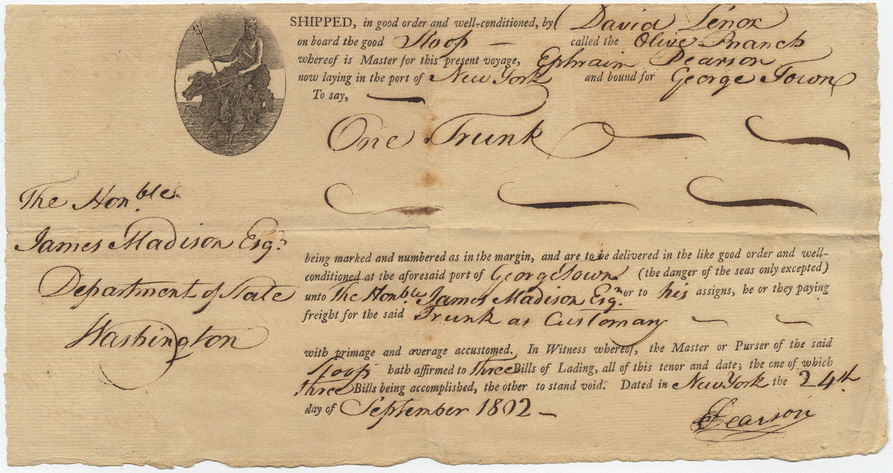A one-page printed form varying in size and style, 8″ x 6″ to 5″ x 11″, representing approximate common measurements. Usually began, “Shipped in Good Order And (Well Conditioned) Condition, by…” Small engravings of sailing vessels are often present. Revenue stamps frequently appear, and a handwritten receipt of goods by the consignee is sometimes found on the reverse side.
The Bill of Lading was signed by the master, acknowledging receipt of the cargo described on the document. It also reaffirms his obligation to deliver the goods to the consignee or his order as detailed in the Charter Party. The amount of cargo taken in is indicated, and any identifying marks are included in the description. There were usually three or four copies of a Bill of Lading. One was delivered to the master, another kept by the shipper, and one was sent to the consignee. Bills of Lading were considered part of a private transaction between the owner of the goods and the master, and did not provide the same degree of authenticity as the Charter Party or the Manifest. Bills of Lading are common maritime documents which can provide valuable information about the transportation of various cargoes and the business of shipping.

Bill of Lading for shipment of “One Trunk,” from New York to Georgetown, and consigned to James Madison, Secretary of State, September, 1802.

Bill of Lading for general cargo to the West Indies, March, 1787. Since goods were not consigned, the master was responsible for finding buyers when he arrived.
